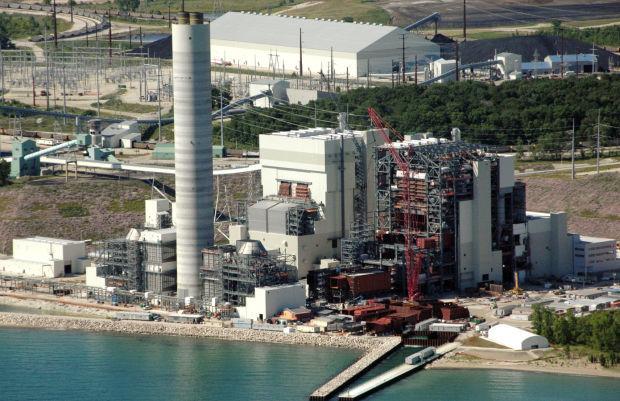



|

|

|
||||
|
Welcome to the GoFuckYourself.com - Adult Webmaster Forum forums. You are currently viewing our boards as a guest which gives you limited access to view most discussions and access our other features. By joining our free community you will have access to post topics, communicate privately with other members (PM), respond to polls, upload content and access many other special features. Registration is fast, simple and absolutely free so please, join our community today! If you have any problems with the registration process or your account login, please contact us. |

 |
|
|||||||
| Discuss what's fucking going on, and which programs are best and worst. One-time "program" announcements from "established" webmasters are allowed. |
|
|
Thread Tools |
|
|
#1 |
|
Confirmed User
Industry Role:
Join Date: Aug 2016
Location: Europe
Posts: 4,325
|
For the first time ever renewables beat coal in the US
Renewables provided 23% of U.S. power in April, while coal generated 20%.
In a remarkable sign of the shifting fortunes of dirty energy and clean energy, more renewable power was generated in April than coal power — something that’s never happened before in the United States. The U.S. Energy Information Administration (EIA) announced Wednesday that, in April, “U.S. monthly electricity generation from renewable sources exceeded coal-fired generation for the first time.” While coal provided 20% of U.S. power in April, renewables — which include utility-scale hydropower, wind, solar, geothermal, and biomass — provided 23% of total generation.  Coal power generation cycles seasonally because temperatures moderate over much of the country in the spring and fall, reducing the power generation needed for air conditioning and heating. During those seasons, coal generation drops, and some plants are shut down for maintenance. This seasonal drop in coal power is on top of the steady decline of coal, which has been increasingly unable to compete economically with cheap natural gas and ever-cheaper renewables. Solar Panels and wind turbines in Palm Springs. March 2015. (Credit: Getty) Renewables are winning the economics battle against new coal and gas, stunning study shows In fact, the EIA reports that U.S. wind power hit a record monthly high in April. And solar will almost certainly hit a record monthly high sometime this summer. The country continues adding both solar and wind generation at a very strong pace. So, when will annual renewable electricity generation surpass annual coal generation? The EIA projects out to only 2020 in its latest “Short-Term Energy Outlook” (STEO).  The EIA expects coal will out-generate renewables in 2019 and 2020 — though it projects renewables will top nuclear next year for the first time ever. Renewables will likely top coal in the next decade, but the exact timing will depend on who the president is in 2021. President Donald Trump is trying to hold on to the dirty energy sources of the past, while all the Democrats running have promised to speed up the switch to clean energy in order to protect public health and avoid catastrophic climate change. |
|
|

|
|
|
#2 |
|
Too lazy to wipe my ass
Industry Role:
Join Date: Aug 2002
Location: A Public Bathroom
Posts: 38,701
|
i like repooables...
|
|
|

|
|
|
#3 |
|
Jägermeister Test Pilot
Industry Role:
Join Date: Dec 2001
Location: NORCAL
Posts: 74,505
|
Here in California everyone has solar. It rarely rains and it's sunny all year round. It's great.
__________________
“The choice is no longer between right or left. The choice is between normal and crazy.” - Sarah Huckabee Sanders YNOT MAIL | THE BEST ADULT MAILING SOLUTION |
|
|

|
|
|
#4 |
|
Confirmed User
Industry Role:
Join Date: Aug 2016
Location: Europe
Posts: 4,325
|
 |
|
|

|
|
|
#5 |
|
Too lazy to set a custom title
Join Date: Aug 2001
Location: portland, OR
Posts: 20,684
|
It's good to see. Oil and coal are yesterday's energy sources. We need to work on developing tomorrow's energy sources.
|
|
|

|
|
|
#6 |
|
Confirmed User
Industry Role:
Join Date: Aug 2016
Location: Europe
Posts: 4,325
|
 Wind, solar energy now cheaper than most existing coal plants A new report suggests it costs more to operate four of Wisconsin’s seven largest coal-fired electricity plants than it would to replace them with wind and solar power. The findings are from a study released Monday by Energy Innovation, a California nonprofit that advances policies to reduce greenhouse gas emissions, with help from the renewable energy forecasting firm Vibrant Clean Energy. The study found that, in theory, wind and solar could today replace nearly three-quarters of the nation’s coal plants at an immediate saving. Those include plants in Oak Creek, Genoa, and Wausau with a combined capacity of nearly 3,000 megawatts. By 2025, the study found, renewables will be more than 25 percent cheaper than every coal plant in Wisconsin except We Energies’ Elm Road Generating Station, which was built in this decade. And it could be done on usable land within 35 miles of each plant. “That really makes it a conservative analysis,” said Michael O’Boyle, director of electricity policy for Energy Innovation. “The best wind and solar resources are often much farther away.” That could have big ramifications for Wisconsin, which generates more than half of its electricity from coal. But of course there are caveats. Wind and solar can replace the output of coal plants on an annual basis but can’t match it hour by hour, which would be necessary to operate the grid reliably. That would require additional technology like batteries, demand management and “smart grids.” “I don’t think it’s a pure one-to-one substitution,” said Paul Meier, an energy analyst and founder of the Madison consulting firm Juicebox. “Regardless, I do think those renewables would drop the market price for power during much of the year and therefore make those coal plants increasingly uneconomic.” O’Boyle concedes there are practical limitations and that the numbers will vary from plant to plant. “This is really a conversation starter,” he said. And just because a coal plant costs more to operate doesn’t mean it isn’t making money for investor-owned utilities, which are guaranteed a roughly 10 percent return on the investment. Most of the major utilities have pledged to cut 80 percent of carbon emissions by 2050, although a panel of U.N. scientists released a report last fall saying greenhouse gas emissions need to drop 45 percent in the next decade and fall to near zero by 2050 in order to minimize the risk of catastrophic climate change. But those companies have invested nearly $3 billion in new coal plants this century and sunk another $2.5 billion into pollution controls — which don’t capture carbon — to keep older plants running. The question will be who bears the costs if those assets are retired early — shareholders or ratepayers. Policymakers will need to come up with creative ways to satisfy both, said Tom Content, executive director of the Citizens Utility Board, which represents Wisconsin consumers. “If you go to get a more efficient car you stop making payments on the inefficient car,” Content said. “In this case, we’re being asked to pay for both.” |
|
|

|